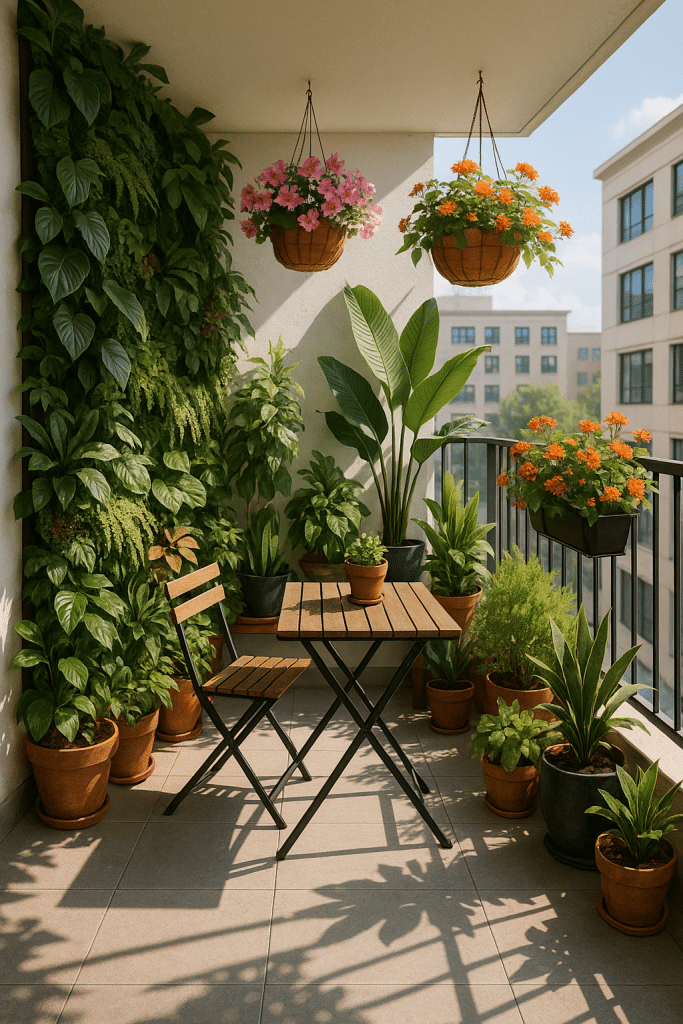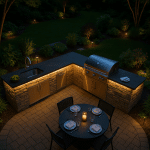Creating a lush, vibrant garden on your balcony is an exciting way to extend your living space into the outdoors. For many homeowners, balconies represent untapped potential—a private, serene retreat amidst the urban sprawl or a cozy nook to cultivate plants and flowers. If you’re dreaming of turning your balcony into a verdant sanctuary, you are in the right place. In this comprehensive guide, I will walk you through the essential steps and ideas for planting a beautiful balcony garden that is not only practical but also creative and sustainable.
Whether you have a petite apartment balcony or a larger outdoor space, I’ll cover expert tips and detailed solutions tailored for various balcony sizes, light conditions, and personal tastes. From container gardening and vertical planting to choosing low maintenance plants and integrating furniture, this guide offers a full spectrum of balcony garden ideas perfect for homeowners seeking practical, innovative outdoor living concepts. By the end of this article, you’ll be equipped to design your very own miniature balcony garden oasis, combining greenery, comfort, and style.
Balcony Garden Ideas for Creative and Practical Outdoor Living
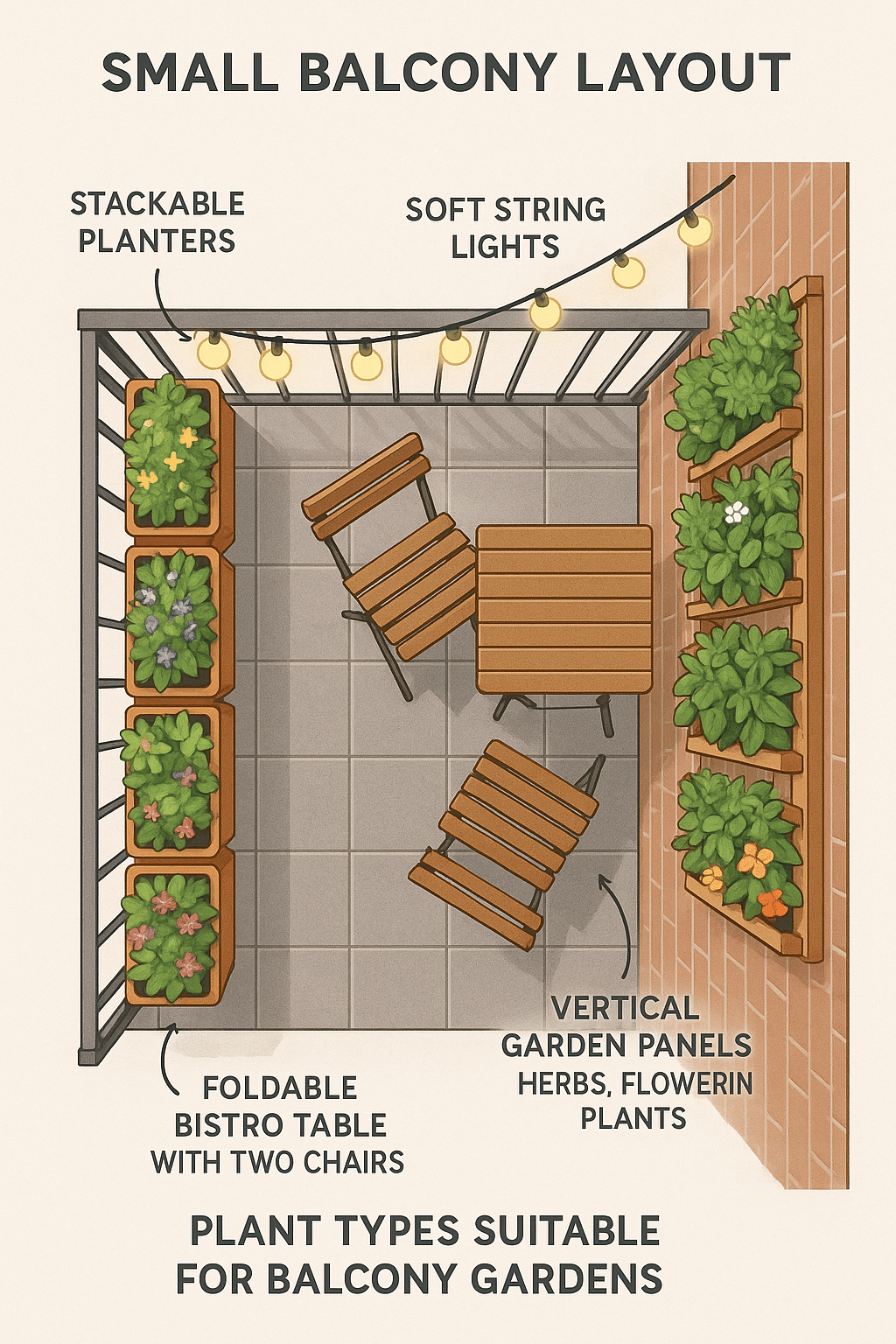
Understanding Your Balcony Space: Key Considerations
Before we dive into specific balcony garden ideas, it’s crucial to understand the environment you’re working with. The success of any garden depends significantly on how well it matches your balcony’s conditions.
Assessing Balcony Size and Layout for Garden Planning
Space is often the biggest challenge when it comes to balcony gardening. Balconies range from narrow ledges barely a couple of feet wide to expansive terraces with ample room for seating and plantings. Start by measuring your balcony’s dimensions, including length, width, and railing height.
Think about the layout too: is it a simple rectangular shape or an irregular area with oddly placed fixtures? This helps plan furniture placement and plant arrangements without overcrowding. For instance, narrow balconies benefit from vertical gardening solutions like wall-mounted planters or tiered stands, saving precious floor space.
Also, consider existing obstacles such as doors, windows, or utility access points. Creating a functional flow often means reserving footpaths free from clutter. I recommend sketching a rough floor plan to visualize how plants, containers, and furniture will fit.
Evaluating Light Exposure and Microclimate Conditions
The amount and quality of sunlight your balcony receives significantly influence which plants will thrive. Most plants fall into three basic categories based on light needs:
- Full Sun: At least 6 hours of direct sunlight daily—ideal for sun-loving herbs, vegetables, and flowering plants.
- Partial Sun/Shade: 3-6 hours of direct sun or dappled light—great for many tropical plants and certain flowers.
- Full Shade: Less than 3 hours of direct sunlight—suited for shade-tolerant plants like ferns or hostas.
Wind exposure and temperature fluctuations also shape your balcony’s microclimate. High-rise balconies can be windy and hotter than ground-level gardens, so consider windbreaks or sturdier plant varieties. Take note of how the sun moves across the space during the day to identify shaded versus sunny spots.
Structural Weight Limits and Safety Guidelines
Your balcony’s structural integrity is critical when adding garden elements, especially heavy soil-filled containers or raised beds. Most modern balconies can handle several hundred pounds, but it’s wise to consult your building’s management or refer to architectural documents for weight limits.
Avoid placing excessively heavy pots directly on fragile surfaces and distribute weight evenly. Hanging baskets and vertical planters often reduce load impact. Keep safety in mind—secure pots and furniture to prevent falls, especially in windy conditions.
Choosing Plants Perfect for Balcony Gardens
Selecting plants that suit your balcony’s conditions and personal preferences is a cornerstone of a thriving garden.
Low Maintenance Plants for Balcony Gardens
Balcony gardens are best enjoyed when they don’t require daily babysitting. I often recommend incorporating hardy, low maintenance plants that provide long-term enjoyment with minimal fuss.
Succulents, Cacti, and Drought-Tolerant Varieties
Succulents and cacti are champions of balcony gardens, especially for sunny and dry conditions. Popular options include:
- Aloe Vera: Medicinal and easy to care for.
- Echeveria: Rosette-forming succulents with stunning colors.
- Jade Plant (Crassula ovata): Symbol of good luck and easy to propagate.
- Sedum: Varied species with trailing or upright growth.
These plants thrive in well-draining soil and need infrequent watering, making them perfect for busy homeowners. They also excel in containers, where their compact forms shine.
Shade-Tolerant Plants for Limited Sunlight Balconies
If your balcony lacks direct sun, consider shade-loving species such as:
- Ferns: Boston fern and maidenhair fern add lush greenery.
- Hostas: Known for their broad, decorative leaves.
- Begonias: Well-suited to low light with colorful blooms.
- Caladium: Vibrant foliage plant that brightens shady spaces.
These plants help maintain greenery even in subdued conditions and pair well with vertical elements like trellises.
Edible Plants: Herbs, Microgreens, and Compact Vegetables
Nothing beats the joy of harvesting your own fresh herbs and greens. Balcony gardening isn’t just ornamental—growing edible plants is highly rewarding and quite feasible.
DIY Balcony Herb Garden Ideas for Fresh Flavors
Herbs are ideal for balconies due to their manageable sizes and culinary uses. Some favorites include:
- Basil: Thrives in sun, perfect for pesto and salads.
- Thyme & Oregano: Hardy, aromatic herbs that tolerate container life.
- Mint: Vigorous grower; best contained to avoid spreading.
- Parsley & Cilantro: Great for kitchens and salads.
Create a DIY herb garden using window boxes on railings, tiered stands, or vertical planters. You can even install an herb spiral—a compact, spiral-shaped planting system that maximizes space and microclimates for different herbs.
For quick harvesting, incorporate microgreens, which grow rapidly and pack nutrition in small spaces, and compact vegetables like dwarf cherry tomatoes or peppers.
Trailing and Climbing Plants for Vertical Appeal
To maximize space and visual impact, trailing and climbing plants add greenery and softness vertically. Some excellent choices are:
- Creeping Jenny (Lysimachia nummularia): Vibrant trailing plant for borders.
- English Ivy: Classic climber that offers privacy and charm.
- Sweet Pea: Fragrant annual vines that bloom with color.
- Morning Glories and Nasturtiums: Fast-growing and visually appealing flowers.
Paired with trellises or wire frames, these plants transform plain balcony walls into lush green curtains.
Container Gardening Solutions for Balconies
Containers are the backbone of balcony gardening. Choosing the right containers and understanding soil mixes set the foundation for healthy plant growth.
Selecting the Right Containers and Soil Mixes
Containers come in a variety of materials—terracotta, ceramic, plastic, metal, bamboo, and even fabric grow bags. Each has pros and cons:
- Terracotta: Porous, breathes well but dries out quickly.
- Plastic: Lightweight, retains moisture longer.
- Ceramic: Attractive, heavier for stability but pricier.
- Fabric Bags: Allow air pruning of roots, excellent for vegetables.
Size matters; larger containers hold more moisture and provide stable root environments, especially for woody or perennial plants. Ensure containers have adequate drainage holes.
For soil, use high-quality, well-draining potting mixes formulated for container plants, often enriched with perlite or vermiculite to maintain aeration. Avoid using garden soil as it’s heavy and poorly drains in pots.
Compact Raised Garden Beds for Efficient Growing
Raised garden beds adapted for balconies offer excellent control of soil conditions and drainage while being space-efficient. Compact raised beds constructed from lightweight wood or modular plastic units can fit snugly against railings or corners.
These beds allow planting of vegetables, herbs, and flowers in soil beds deeper than typical containers—encouraging robust root systems and higher yields. Many models come with built-in irrigation reservoirs, which simplify watering routines.
DIY Pallet Gardens and Vertical Planters for Space Saving
For a creative, budget-friendly approach, refurbishing wooden pallets into vertical planters is inspiring and space smart. Pallets can be sanded, sealed, and fitted with fabric liners to hold soil and plants on multiple levels. This technique is excellent for growing herbs, succulents, and trailing plants.
Wall-mounted planters and pocket gardens crafted from recycled materials also optimize vertical spaces. Multi-tier plant stands enable abundant planting without compromising balcony floor space.
Designing Privacy and Ambiance with Balcony Garden Screens
Privacy often tops the list of homeowners’ priorities in balcony design, especially in urban environments.
Creative Balcony Garden Privacy Screens Using Plants and Structures
Instead of unsightly fences or plastic barriers, use living screens to achieve privacy. Options include:
- Tall ornamental grasses: Such as fountain grass or bamboo in planters.
- Climbing plants on trellises: Growing vines like jasmine or passionflower for dense cover.
- Modular wooden lattice panels: Stylish panels with integrated planter boxes.
Mixing these with lightweight pergolas or retractable fabric awnings enhances shelter and style.
Utilizing Cascading Plants and Trellises for Privacy and Beauty
Cascading plants like ivy or golden pothos can be trained over the edges of tall planters or railings, softening boundaries and offering privacy without bulk.
Trellises allow vertical growing of climbers that create natural green walls. Position them strategically to screen neighbors’ views while maximizing airflow and sunlight.
Maximizing Vertical Space: Innovative Vertical Gardening Solutions
Vertical gardening is ideal for balconies with limited floor space, offering a lush garden aesthetic without crowding.
Hanging Baskets, Wall Planters, and Multi-Tier Plant Stands
Hanging baskets are a classic element—perfect for trailing flowers like petunias or trailing herbs such as thyme. Use sturdy hooks or railing clamps to fix them securely.
Wall-mounted planters come in pocket or modular styles and can accommodate a variety of plants, from succulents to lettuces. Platforms or step-style stands stack pots vertically to create plant-rich corners.
Herb Spirals and Other Space-Efficient Growing Techniques
Herb spirals are compact, spiral-shaped raised beds that use vertical elevation to create microclimates—sun lovers at the top, moisture lovers at the bottom. Building one requires some DIY skills but offers a productive garden footprint less than a square meter.
Other techniques include using tiered shelves with drip irrigation systems or installing vertical hydroponic systems for soil-less growing.
Combining Balcony Garden Furniture and Plant Arrangements
To truly enjoy your balcony garden, blending functional furniture with plants creates inviting, livable outdoor spaces.
Compact and Foldable Outdoor Furniture Options for Balconies
Space-conscious homeowners benefit from foldable chairs, nesting tables, and slim benches that tuck away when unused. Materials like lightweight aluminum or resin wicker combine durability with easy maintenance.
Opt for furniture with built-in storage to keep gardening tools or cushions tucked away neatly, enhancing orderliness.
Creating Cozy Seating Areas Amidst Greenery
Plant arrangements can frame seating areas to create intimate, calm zones. Tall planters define corners, trailing plants soften edges, and fragrant blooms add sensory appeal.
Adding outdoor cushions, rugs, and portable lighting turns the balcony into a comfortable retreat for reading or entertaining.
Sustainable and Smart Balcony Garden Design Concepts
Creating a balcony garden that is eco-friendly and easy to maintain benefits the environment and your pocketbook.
Water-Efficient Irrigation and Balcony Garden Watering Tips
I recommend drip irrigation systems or self-watering containers that reduce water waste and keep plants consistently moist. Grouping plants with similar watering needs streamlines care.
Using rainwater collection systems (where possible) to irrigate the garden adds sustainability and decreases utility costs.
Using Recycled Materials and Eco-Friendly Planters
Incorporate recycled containers like old tins, jars, or wooden crates refurbished as planters. Bamboo, cork, and biodegradable pots are great eco-alternatives.
Mulching container surfaces with organic matter helps retain moisture and keeps weeds down.
Seasonal Balcony Garden Design and Plant Care
Balcony gardens aren’t static—they evolve with the seasons. Regular updates and care keep them fresh and productive.
Adjusting Plant Choices and Layouts for Changing Seasons
Switch out annuals seasonally—summer-hardy species like marigolds can be replaced by cool-hardy pansies or kale in autumn.
Using portable containers allows relocation of sensitive plants indoors during harsh weather.
Maintenance Routines and Fertilization Tips
Feed plants using organic slow-release fertilizers or liquid feeds regularly during growth periods; adjust watering accordingly.
Prune and deadhead flowering plants to encourage blooms and prevent overcrowding.
Enhancing Balcony Gardens with Lighting and Decorative Elements
Lighting extends your enjoyment into evening hours and builds atmosphere.
Balcony Garden Lighting Ideas for Nighttime Ambiance
Solar-powered stake lights, string fairy lights, and LED lanterns add soft, inviting illumination. Motion sensor lights improve safety.
Use warm light tones to create cozy vibes, and position lights behind plants for dramatic shadow play.
Adding Color and Texture with Decorative Pots and Accessories
Selecting pots with varied textures, patterned tiles, or painted finishes adds character. Wind chimes, ornamental bird feeders, and garden sculptures personalize your space further.
How to Create a Miniature Balcony Garden Oasis
Finally, bringing everything together creates your own private garden retreat.
Blending Aromatic Plants, Textures, and Seating for a Relaxing Retreat
Include fragrant plants like lavender, rosemary, or jasmine to stimulate the senses. Mix leafy and flowering species with different textures for visual interest.
A small bistro table with cushions invites relaxation. Add pillows, rugs, or a hammock chair if space permits.
Incorporating Personal Touches and Unique Design Features
Add personal elements like a water feature (small fountain), herb spiral, or repurposed heirloom containers to convey uniqueness and charm.
Your balcony garden oasis is an extension of your personality—a place to unwind, entertain, and connect with nature.
Troubleshooting Common Balcony Garden Challenges
Every balcony garden faces hurdles—here’s how to overcome them.
Dealing with Wind, Limited Space, and Water Drainage Issues
Use sturdy pots and weigh down light items for wind resistance. Arrange plants and furniture to break gusts.
Maximize vertical and hanging planters to manage space constraints. Ensure all pots have drainage holes and use saucers to avoid water pooling.
Pest Management Strategies for Balcony Plants
Common pests like aphids or spider mites can be managed with natural remedies such as insecticidal soap or neem oil. Encourage beneficial insects like ladybugs by planting flowering species that attract them.
Regular inspection and maintaining plant health through adequate watering, feeding, and pruning also prevent infestations.
Quick Takeaways
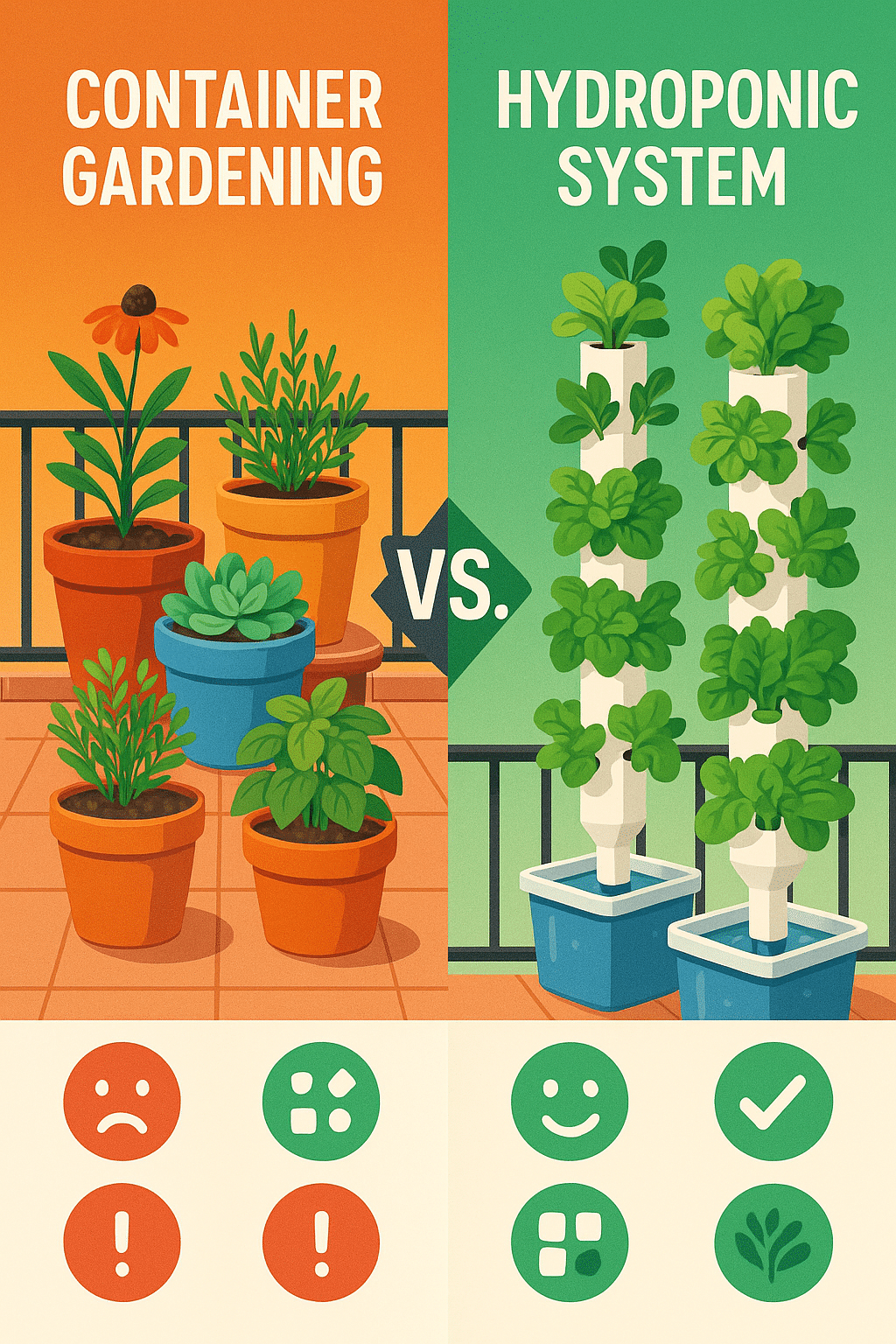
- Assess your balcony’s size, sunlight, and structural limits before planning your garden.
- Incorporate low maintenance plants like succulents, shade-loving ferns, and herbs suited to your space and conditions.
- Use container gardening, vertical planters, and DIY solutions like pallet gardens to maximize space.
- Create privacy with living screens, trellises, and cascading plants.
- Blend compact furniture and greenery to design a cozy outdoor retreat.
- Embrace sustainable practices including water-efficient watering and recycled materials.
- Plan for seasonal changes by rotating plants and adjusting care routines.
- Enhance ambiance with lighting, decorative pots, and personal touches.
- Prepare for challenges like wind and pests with appropriate strategies.
Frequently Asked Questions (FAQs)
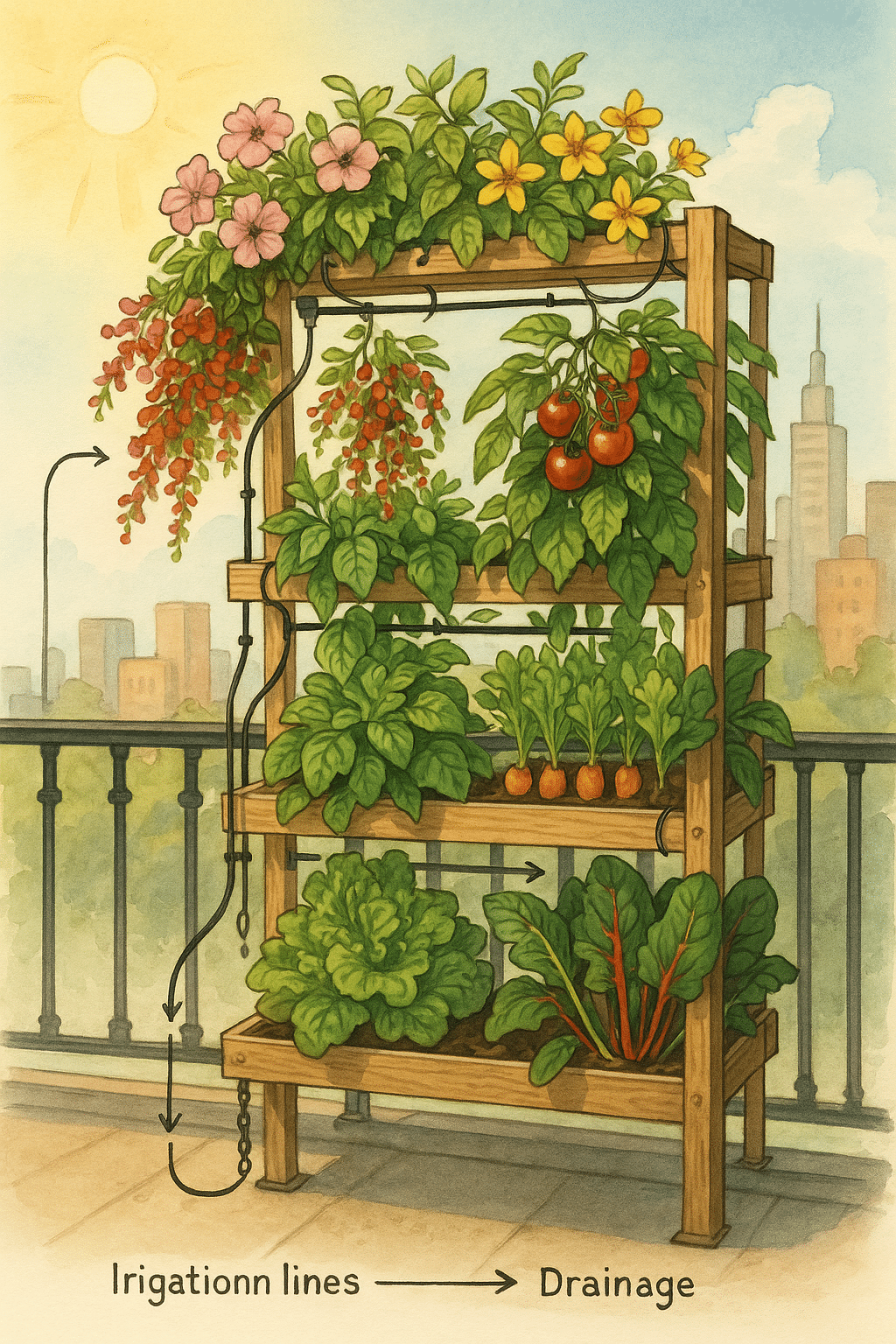
1. What are the best small balcony garden ideas for apartments with limited space?
Maximize vertical space using wall planters and hanging baskets. Choose compact, low maintenance plants like succulents, dwarf herbs, and trailing vines. Folding furniture and DIY pallet gardens are great multifunctional options for tight spaces.
2. How can I grow an herb garden on my balcony without much sunlight?
Opt for shade-tolerant herbs such as mint, parsley, chives, and lemon balm. Use containers with good drainage and place plants where they get bright, indirect light. Consider supplemental grow lights if natural light is insufficient.
3. What are some good DIY vertical gardening solutions for balconies?
You can build pallet gardens, mount pocket planters, or use stacking plant stands. Herb spirals and wall-mounted hydroponic systems create space-efficient, colorful displays ideal for small balconies.
4. How do I maintain a low-maintenance balcony garden?
Select drought-tolerant and shade-adapted plants. Use quality potting soil and self-watering containers to reduce the frequency of watering. Group plants with similar care needs and add slow-release fertilizers. Regularly remove dead leaves and inspect for pests.
5. What types of balcony garden privacy screens work best?
Plant-based screens using tall grasses, climbing vines on trellises, and cascading plants provide natural and attractive privacy. Modular wooden lattice panels with integrated planters offer stylish, customizable barriers that blend seamlessly with greenery.
Conclusion
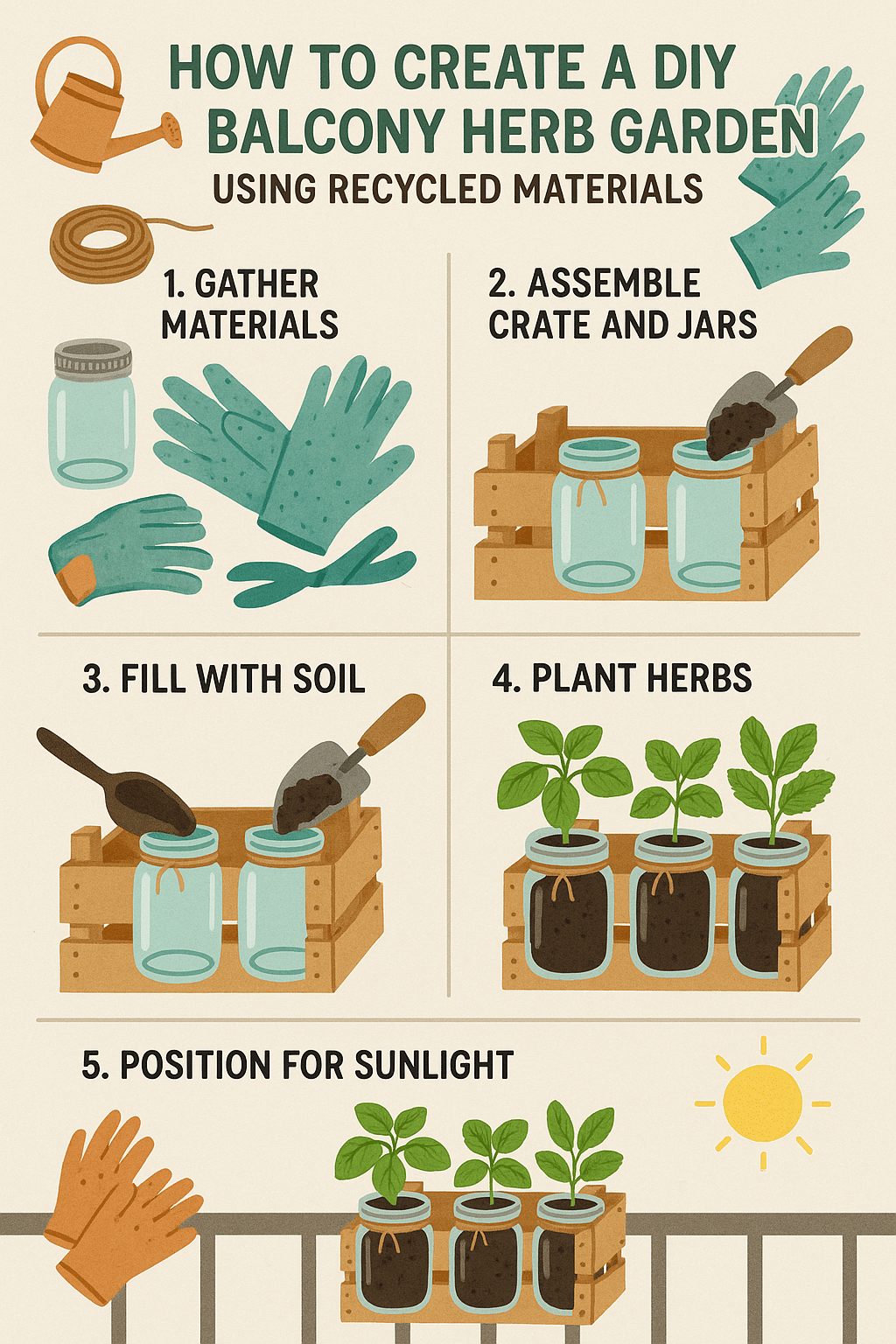
Designing a balcony garden is a rewarding journey that transforms any outdoor nook into a functional, beautiful living space. With the right balcony garden ideas, you can overcome space constraints, variable sunlight, and environmental challenges to build your own peaceful, green retreat. By thoughtfully combining low maintenance plants, creative container gardening solutions, privacy screens, cozy furniture arrangements, and sustainable practices, your balcony will become an inviting extension of your home—an oasis of tranquility right at your doorstep.
I encourage you to embrace experimentation and personalization in every step of your balcony gardening adventure. Start small, observe what works best in your unique environment, and expand as your confidence grows. Whether you desire fresh herbs for your kitchen, a colorful flower paradise, or a serene reading corner surrounded by nature, your balcony has limitless potential.
So, grab your gardening gloves, gather your containers, and let your imagination run wild—you’re about to create the perfect outdoor escape tailored precisely to your lifestyle and dreams. Happy gardening!

